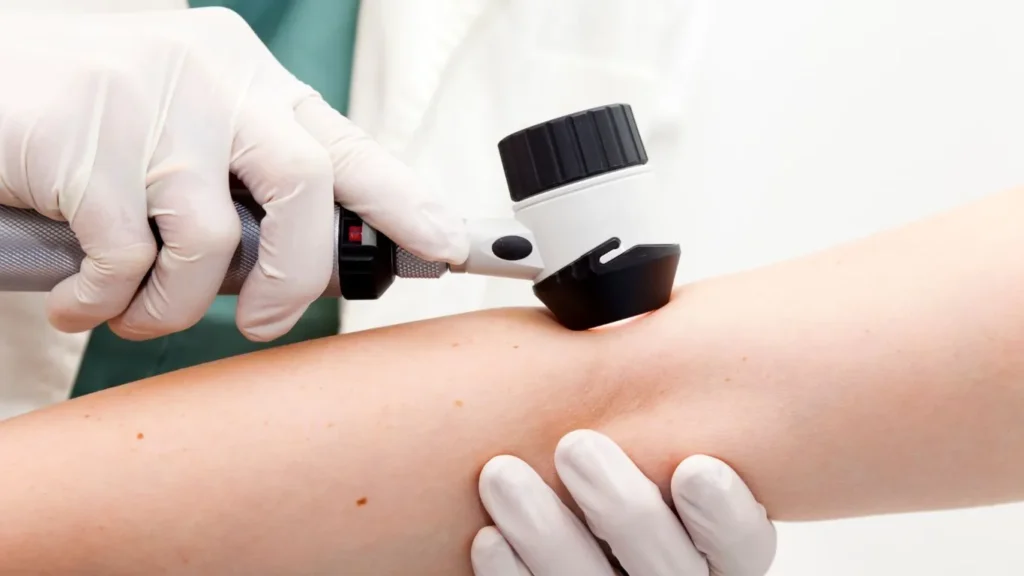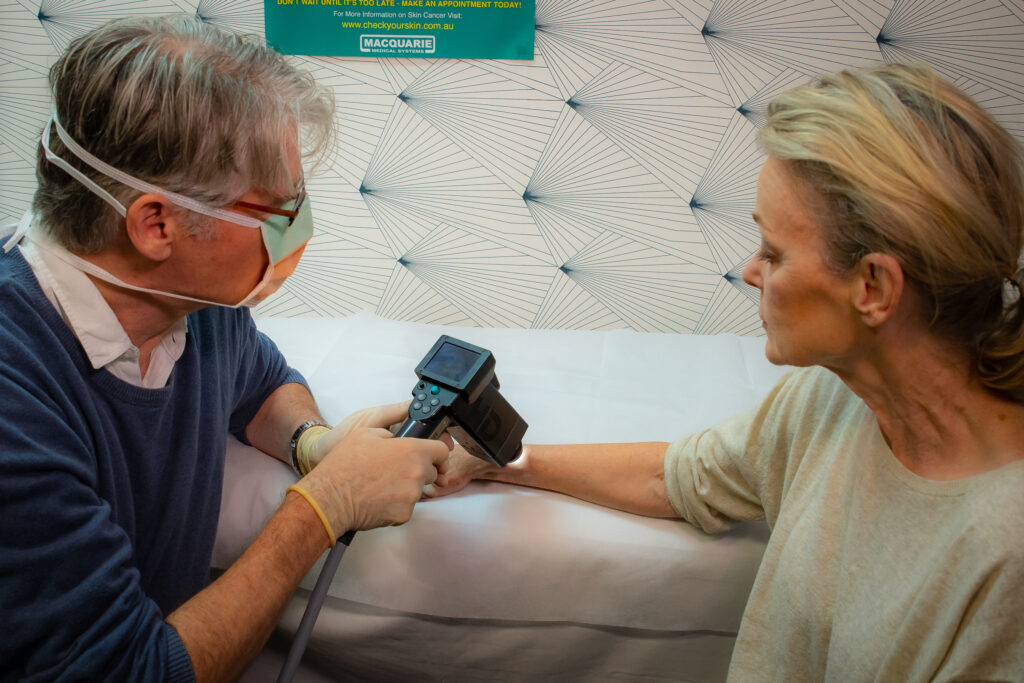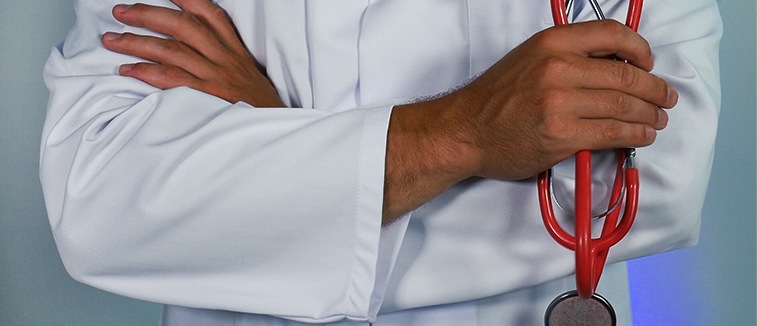
Early detection of skin cancer saves lives — and the professionals trained to assess and monitor skin lesions play a vital role in that process. Whether you are a nurse, dermal clinician, or doctor, there are well-defined educational pathways to gain the expertise needed to assess, image, and help diagnose skin cancer.
This guide outlines how you can progress toward becoming a dermoscopist or melanographer, and what qualifications are needed at each level.
Understanding the Roles
Before exploring the pathways, it’s important to understand what these professionals do.
Dermoscopy

Dermoscopy is a non-invasive diagnostic technique that uses a dermoscope — a magnifying device with polarised light — to examine structures beneath the skin surface. It allows trained professionals to distinguish benign lesions from malignant ones with greater accuracy.
A dermoscopist is someone who has completed specialised training in dermoscopy and lesion assessment. Dermoscopists may be doctors, nurses, or dermal clinicians with additional education in skin cancer detection.
Melanography

Melanographers use digital photography and dermoscopic imaging to document, map, and monitor moles and skin lesions over time. This imaging provides essential information for dermatologists, nurses, or dermal clinicians, and skin cancer clinicians to track changes that may indicate malignancy.
General Practitioner

A general practitioner (GP) can diagnose skin cancer, as skin checks and the assessment of suspicious lesions are part of standard medical practice in Australia. All GPs are medically trained doctors who have completed a medical degree and internship, giving them the foundational skills to recognise common skin cancers such as BCC, SCC and melanoma. However, to assess the skin accurately and confidently, especially for subtle or early lesions, GPs are strongly encouraged to complete additional training in dermoscopy and skin cancer medicine, such as certificates or diplomas accredited by organisations like the Skin Cancer College Australasia or HealthCert. These qualifications provide advanced skills in pattern recognition, dermoscopic criteria, biopsy techniques and clinical decision-making. While a GP does not legally need extra qualifications to diagnose skin cancer, those with specialised training generally offer more accurate detection, safer biopsy procedures and improved management of high-risk lesions.
Pathway 1: From Nurse to Skin Cancer Assessor
Nurses are often the first point of contact in skin cancer clinics. With additional education, they can progress to perform dermoscopic imaging, assist in lesion assessments, and support patient care.
Step-by-Step Pathway
- Registered Nurse Qualification (RN) – Complete a Bachelor of Nursing and gain registration with AHPRA.
- Clinical Experience – Work in general practice, dermatology, or a skin cancer clinic to build foundational knowledge.
- Postgraduate Training in Dermoscopy – Enrol in accredited dermoscopy courses (e.g. HealthCert Professional Certificate in Dermoscopy) to learn lesion recognition and diagnostic techniques.
- Advanced Certification or Diploma – Progress to Advanced Certificate or Diploma of Dermoscopy to interpret complex lesions confidently.
- Optional: Melanography or Skin Imaging – Undertake additional melanography training (through institutions like Melanoma Institute Australia or UQ) to gain skills in skin mapping and digital imaging.
Career Outcome:
→ Dermoscopy-trained nurse or melanographer supporting dermatologists and doctors in clinical skin cancer assessment.
Pathway 2: From Dermal Clinician to Skin Cancer Specialist
Dermal clinicians have a strong foundation in skin anatomy, pathology, and advanced dermal treatments — making them well-positioned to develop skin cancer assessment skills.
Step-by-Step Pathway
- Bachelor or Master’s Degree in Dermal Science / Clinical Dermal Therapies – Obtain a qualification from an accredited institution (e.g., Victoria University, Southern Cross University).
- Clinical Experience in Skin Health – Work in dermatology, cosmetic, or skin cancer settings to gain practical experience.
- Professional Training in Dermoscopy – Complete professional diploma of dermoscopy (e.g., through HealthCert, UQ, or Skin Cancer College Australasia).
- Melanography or Total Body Imaging Training – Learn lesion documentation, imaging protocols, and longitudinal tracking for early melanoma detection.
- Ongoing Professional Development – Attend conferences, workshops, and complete refresher courses in advanced dermoscopy and skin imaging.
Career Outcome:
→ Dermal clinician with expertise in dermoscopy and skin cancer detection, working alongside dermatologists or in multidisciplinary skin cancer clinics.
Pathway 3: From Doctor to Skin Cancer Specialist
Doctors can pursue advanced clinical pathways to become recognized skin cancer doctors or even dermatologists.
Step-by-Step Pathway
- Medical Degree (MBBS or MD) – Qualify as a medical doctor.
- General Practice Training (FRACGP or equivalent) – Become a GP, which allows you to assess and refer skin lesions.
- Postgraduate Skin Cancer Education – Enrol in structured programs such as:
- Professional Certificate / Advanced Certificate / Diploma in Skin Cancer Medicine (HealthCert or SCCA), Professional Certificate in Dermoscopy, Master of Medicine (Skin Cancer) – University of Queensland
- Clinical Experience – Work in dedicated skin cancer clinics to refine diagnostic and excision skills.
- Optional: Specialist Pathway – For those wishing to specialize fully, apply for training with the Australasian College of Dermatologists (ACD).
Career Outcome:
→ Accredited Skin Cancer Doctor or Dermoscopist, able to diagnose and manage skin cancers independently.
Pathway 4: Becoming a Melanographer
Melanography is a specialized area that focuses on total body photography, digital mole mapping, and long-term lesion monitoring.
Step-by-Step Pathway
- Health or Imaging Qualification – Be a registered nurse, dermal clinician, radiographer, or medical imaging technician.
- Melanography Course – Complete accredited training programs (e.g., through the Melanoma Institute Australia or UQ’s Melanography Training).
- Clinical Supervision and Practice – Gain hands-on experience capturing dermoscopic and total-body images under professional supervision.
- Certification and Continuing Education – Maintain skill currency with ongoing education in skin imaging and technology.
Career Outcome:
→ Qualified Melanographer, contributing to early detection through precise skin imaging and monitoring.
The Future of Skin Cancer Assessment
With Australia having one of the highest skin cancer rates in the world, trained professionals in dermoscopy, melanography, and skin cancer medicine are in high demand.
As technology advances, digital dermoscopy and artificial intelligence will further enhance lesion analysis — making education and training more important than ever.
Final Thoughts
Whether you’re a nurse, dermal clinician, or doctor, there’s a clear pathway to specialize in skin cancer assessment.
Through structured dermoscopy and imaging education, you can play a vital role in saving lives by detecting melanoma and other skin cancers early.

